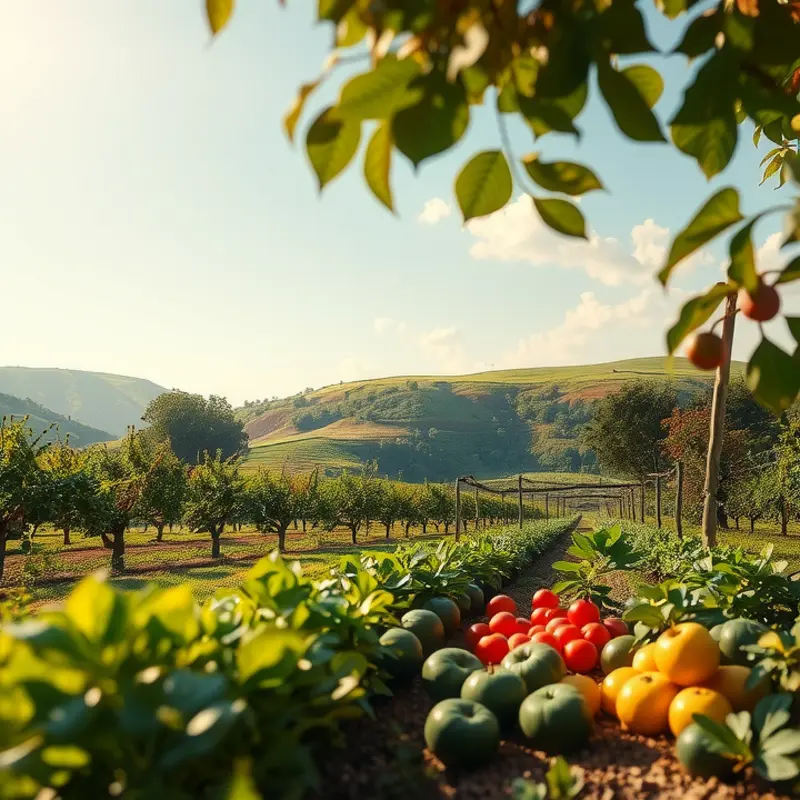Cuisine is a vibrant expression of culture, reflecting the values, history, and diversity of peoples worldwide. Each dish tells a story, whether it’s the spices of an Indian curry, the simplicity of Italian pasta, or the precision of Japanese sushi. Cultural influences intertwine with local ingredients and traditions, creating a unique culinary landscape that invites exploration. This journey into global gastronomy reveals not just flavors but the identities of the communities that nurture these culinary delights.
The Spice Route: A Journey Through Flavor and History

The global palate we experience today owes much to the ancient trade routes that ferried spices like cinnamon, black pepper, and cloves across vast distances. These spices, once locked in the East, made their way to the West through routes like the Silk and Spice Roads, profoundly shaping culinary landscapes.
The demand for spices in Europe created a lucrative trade network, connecting continents and cultures. Venice and Genoa in Italy were prominent ports, serving as key nodes where Eastern goods, including spices, were exchanged. As spices traveled, they blended with local ingredients, giving rise to dishes that are now part of national cuisines.
One reason for the immense value placed on spices was their multi-functional uses. Beyond flavor, they preserved food, masked unsavory odors, and even played roles in medicine and religious rituals. In regions like the Middle East, saffron and cardamom became symbols of hospitality. Meanwhile, the fiery heat of chili peppers from the Americas, once introduced to Asian cuisine, became foundational in countries such as India and Thailand.
The cross-pollination of spices highlights more than trade; it tells a tale of migration and cultural exchanges. When Portuguese sailors discovered new spice routes to India and other parts of Asia, they not only brought spices back to Europe but also introduced European goods to the East. This exchange led to the mingling of culinary traditions. Indian curries, for example, saw the incorporation of tomatoes and potatoes from the New World, subtly altering their flavor profiles over time.
Intercontinental spice trade also prompted European colonialism. Nations vied for direct control over spice-rich lands. This often led to cultural impositions that altered indigenous practices. However, in many instances, colonizers themselves adopted local culinary customs, as they found the local spices irresistible.
Migration continues to play a vital role in the modern culinary landscape. Today’s globalized world sees spices transported easily and quickly, allowing chefs and home cooks alike to experiment with an array of flavors. This has nurtured an environment where fusion cuisine thrives, echoing the historical confluence of tastes. Learn more about culinary influences from trade.
From spiced Moroccan tagines to the herbaceous pho of Vietnam, the legacy of these ancient trade networks is undeniable. It is through the spice route that we are reminded of our interconnected past, reminding us how food transcends mere sustenance and becomes a vessel of cultural heritage.
Culinary Threads: How Traditions Interweave Through Food

Culinary traditions weave a fascinating tapestry across the globe, each thread representing a unique narrative. In many cultures, communal eating practices hold significant importance. Sharing a meal often transcends simple consumption, becoming an experience where bonds are strengthened and stories are shared. This practice reflects societal norms, fostering a sense of belonging and community. For instance, in Ethiopian culture, the act of eating from a common platter signifies unity and trust.
The ritualistic preparation and consumption of certain dishes further illustrate cultural identity. Consider the Japanese tea ceremony, a meticulously choreographed tradition that embodies harmony and respect. Each movement carries meaning, reflecting deep-rooted beliefs about mindfulness and connectedness. These ritualistic elements in food can also be found in Indian cuisine, where meals are not merely served but offered with love and reverence as part of a spiritual practice.
Festive celebrations around the world prominently feature cuisine as a central element. In Mexico, the Day of the Dead combines vibrant celebrations with special foods like pan de muerto. These dishes serve as a connection to ancestors, a blend of cultural reverence and celebratory joy. Similarly, in Jewish culture, Passover meals are not just about sustenance but are imbued with symbolism and historical remembrance.
The societal values of generosity and hospitality often surface through culinary traditions. In Greece, the concept of philoxenia—a love of strangers—emanates through their warm and inviting food culture. Here, sharing meals with guests is an expression of goodwill and acceptance, embodying the Greek ethos of community.
Stories behind traditional recipes often pass down through generations, maintaining a link to the past. Each recipe tells a tale of migration, adaptation, and identity, influenced by the landscapes and climates from which they hail. In Southern cuisine in the United States, dishes like gumbo tell a story of cultural amalgamation, combining flavors and techniques from African, French, and Spanish influences.
In woven culinary narratives, we see continuous threads of adaptation and preservation. As cultures intersect through trade and globalization, new influences emerge (as explored further in this article). This exchange often enriches the culinary landscape without diluting the essence of tradition.
Food is a medium through which we express and experience culture. From the communal meals of Ethiopia to the symbolic dishes of Passover, these culinary expressions maintain the fabric of identity. Through shared meals and passed-down recipes, societies remain connected to their roots, even as they evolve. This intricate dance between tradition and innovation ensures that culinary threads remain vibrant, ever-tying the past to the present and paving pathways for the future.
Final words
Culinary traditions are a beautiful reflection of cultural heritage, evolving as they intertwine with history, geography, and community. Each dish offers a taste of a people’s journey, showcasing their unique stories and values. As food enthusiasts, exploring these diverse culinary narratives enriches our understanding of the world and unites us through shared experience. By savoring flavors from different cultures, we discover the universal language of food—to connect, celebrate, and honor the abundance that diversity brings.








